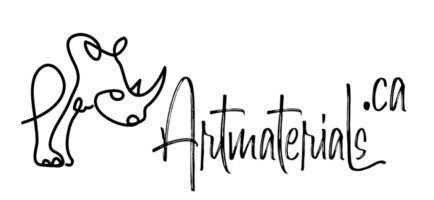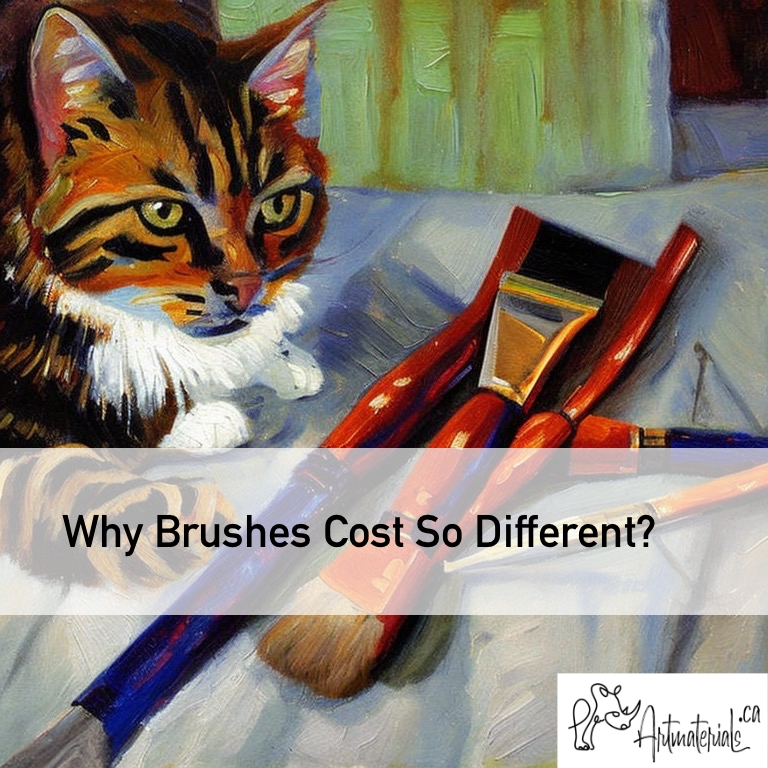The market of art supplies now is full of chaos (maybe, it always was). Some paints or brushes cost just a few dollars, while others go all the way to $100 and up. Unfortunately, the price doesn’t always reflect the quality of the product, which, actually, creates a mess. Let’s talk about brushes and what we’re buying. I’ll make separate sections on different kinds of brushes with a brief overview.
Kolinsky Brushes
Kolinsky Sable brushes are highly prized by artists for their quality, performance, and versatility, making them a popular choice among professionals and serious hobbyists. They work perfectly for watercolour painting and oil glazing techniques. And these brushes vary in price a lot. Really a lot. A round brush 3 mm in diameter can cost $2 or $50. These price differences are worth taking a closer look at why it’s happening, when we deal with a true value and when it’s just a game.
We already have an article about how to choose Kolinsky brushes for your goals , let’s cover just the pricing things.
For brushes, the best and most valuable hair comes from the belly part of Kolinsky males grown in the wild in Siberia (Russia). It doesn’t mean that the best Kolinsky brushes have to be made in Russia. Nowadays, international trade is very developed, and brush manufacturers worldwide have good access to almost anything they need or want. The hair from belly part has relatively short and very springy hair with excellent water and oil absorbency.
As only a limited hair source works well for paint brushes, it makes the brushes very precious. And the best brushes in this category (from what we carry) come from the Roubloff Premium series and Old Holland brand. These brushes are worth the price higher paid.
Nevertheless, many manufacturers use other parts of Kolinsky’s sable to produce their brushes, which leads to quality drops. As the hair itself derived from the tail (for example) can be quite long to use or be very dry and brittle, sometimes brush-makers trim the tips of the brushes that make them unusable for professional detailed work.
As a regular artist can’t make a lab test to assess if the hair belongs to Kolinsky Sable or not, some manufacturers, especially in China, use partially or fully red sable hair and sell it as Kolinsky. A lot of Kolinsky brushes from Amazon or Ali Express that are made in China are suitable for student-grade painting or varnishing details only.
 Kolinsky Imitation Brushes
Kolinsky Imitation Brushes
Kolinsky imitation brushes got very popular for their wide possibilities. Watercolour, oil, acrylic, gouache – they technically can be used for all the mediums. Of course, these brushes have their limitations in the techniques applied but they still, count as the most universal brushes.
Most manufacturers have them coloured as natural hair with a transition from rusty orange at the ferrule to dark brown at the tip. Most of the hair is not quite perforated, which makes these brushes work better for opaque and heavy-bodied mediums, such as gouache, acrylic and oil.
From our shop, kolinsky imitation brushes that are really very close by their properties to the natural hair belong to the Il Perfetto series by Italian manufacturer Borciani e Bonazzi. The filament is micro-perforated which is of of the key characteristics of natural hair brushes.
Orange Synthetic Brushes
Paintbrushes with orange synthetic filament may have different names and belong to the most accessible and least expensive brushes. The hair itself in 95%+ of cases is made of nylon in China.
And pricing here is quite ridiculous as technically the same brush can be sold under different brand names (with just a few variations), and the price for the same brush may vary from 50 cents to 10 dollars, for example. Most dollar-store brushes are made from this kind of fibre.
 As the fibre is made of nylon, the bundle separates and splits when you work in oil and after just a few uses it loses its shape, making it non-workable on any even slightly-detailed painting. Things get worse if you use solvents for cleaning your brushes.
As the fibre is made of nylon, the bundle separates and splits when you work in oil and after just a few uses it loses its shape, making it non-workable on any even slightly-detailed painting. Things get worse if you use solvents for cleaning your brushes.
For acrylics, these brushes last longer, but still, they may split just after several uses. For lighter-in-body mediums, such as watercolour or gouache, the fibre keeps its shape much better. However, the application and brushstroke possibilities here are very limited as the fibre is not perforated and releases the paint unevenly.
These brushes are my least favourite, and I’m using them mostly for acrylic varnishing, and KOLOS Synthetic Wide Flat Brush by Rosa, for example, work perfectly for that goal.
This doesn’t mean that you should avoid orange synthetic brushes, they still have good benefits for the price paid.
Also, not ALL orange-coloured synthetic is like that. There are still some manufacturers that sell high-quality brushes with professional-quality orange synthetic, such as Borciani e Bonazzi Top Graphic Preciso 605, Borciani e Bonazzi Synthetic Triangular, Roubloff Premium Synthetic Brushes and some others.
 Mongoose Imitation Brushes
Mongoose Imitation Brushes
Since mongooses are endogenous species, their hair is not used in brush industry; it’s simply illegal (and inhumane). However, we have a lot of brushes that imitate mongoose hair. Most faux mongoose brushes, of corse, come from China and even respected European brands sell them under their own names without direct indication of place of manufacturing.
Mongoose Imitation brushes are supposed to be stiffer than kolinsky brushes, but still soft and flexible enough to be applied for watercolours, gouache, acrylic and oil. From the selection that we carry on ArtMat, Roubloff mongoose imitation brushes from Russia are the best in their category.
To be continued.


























